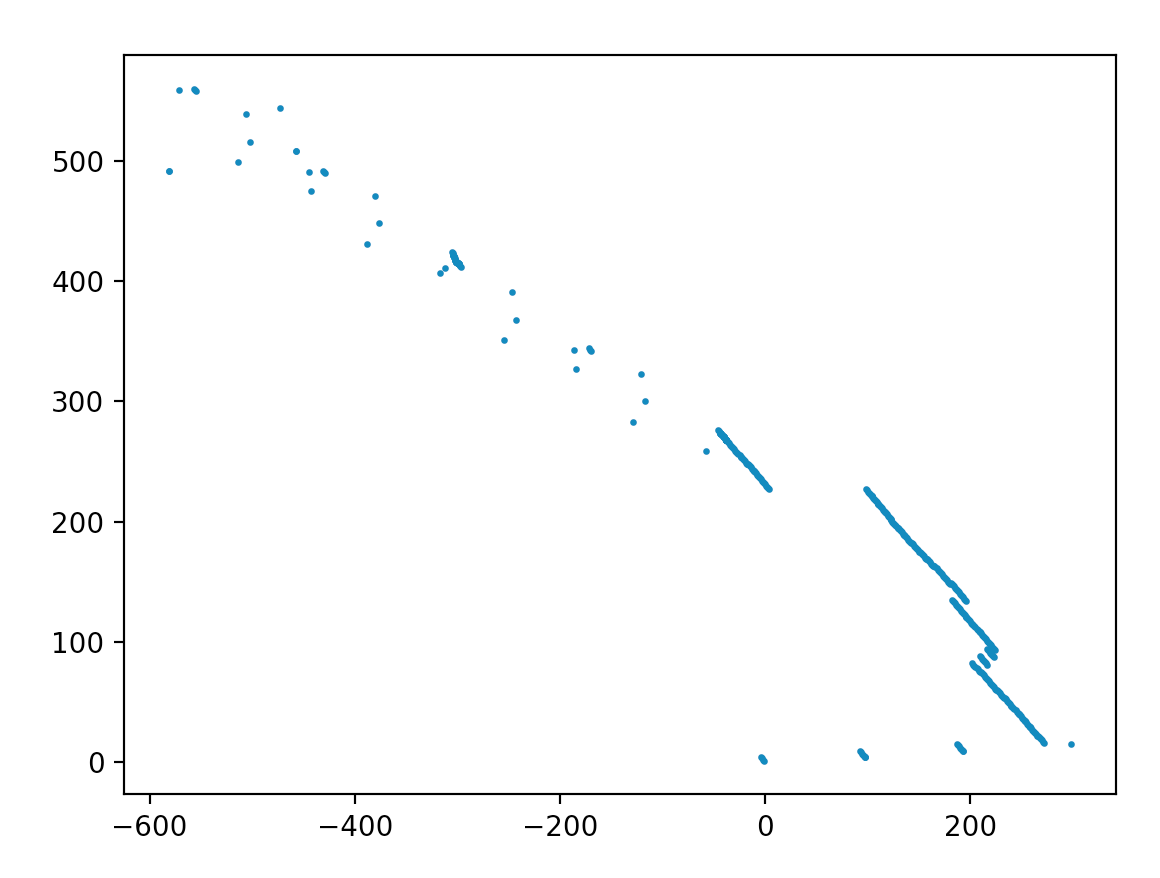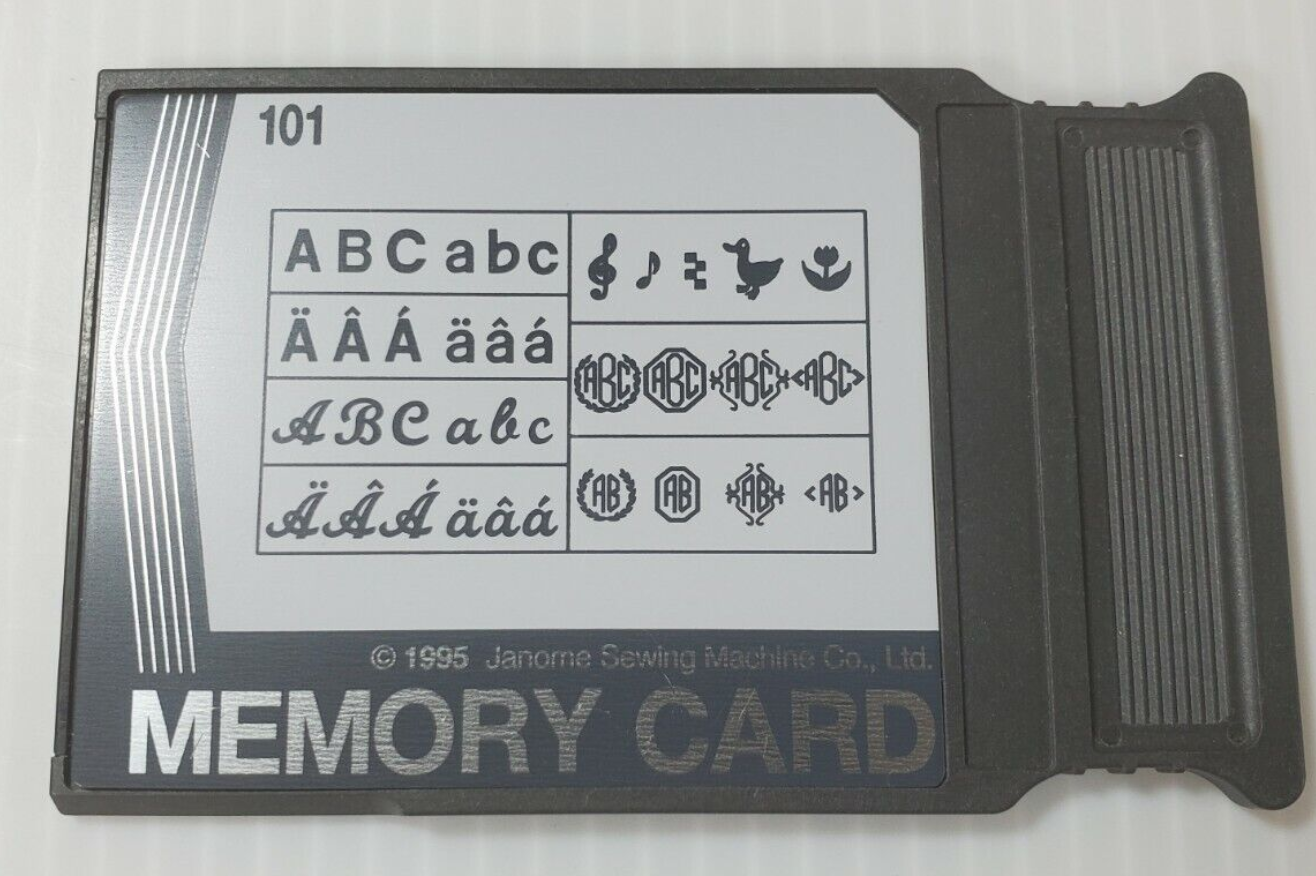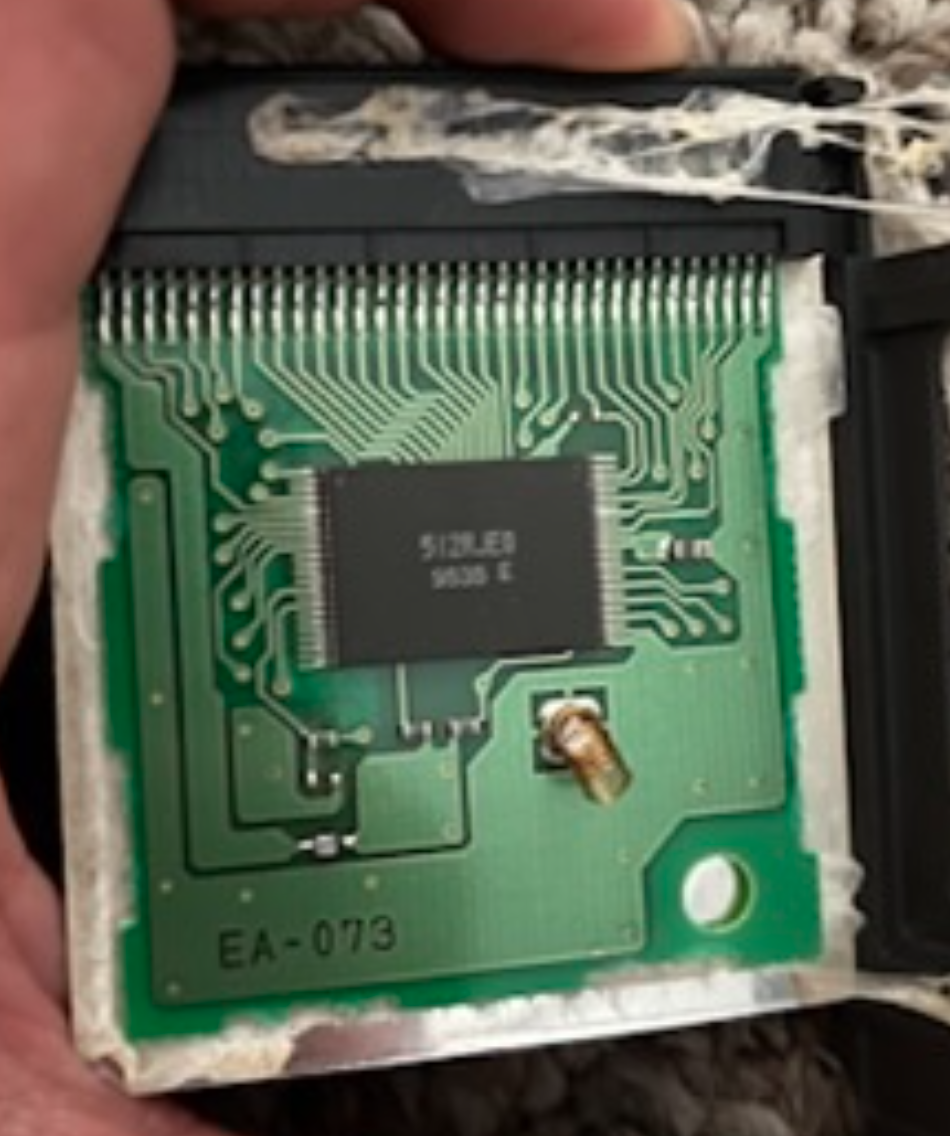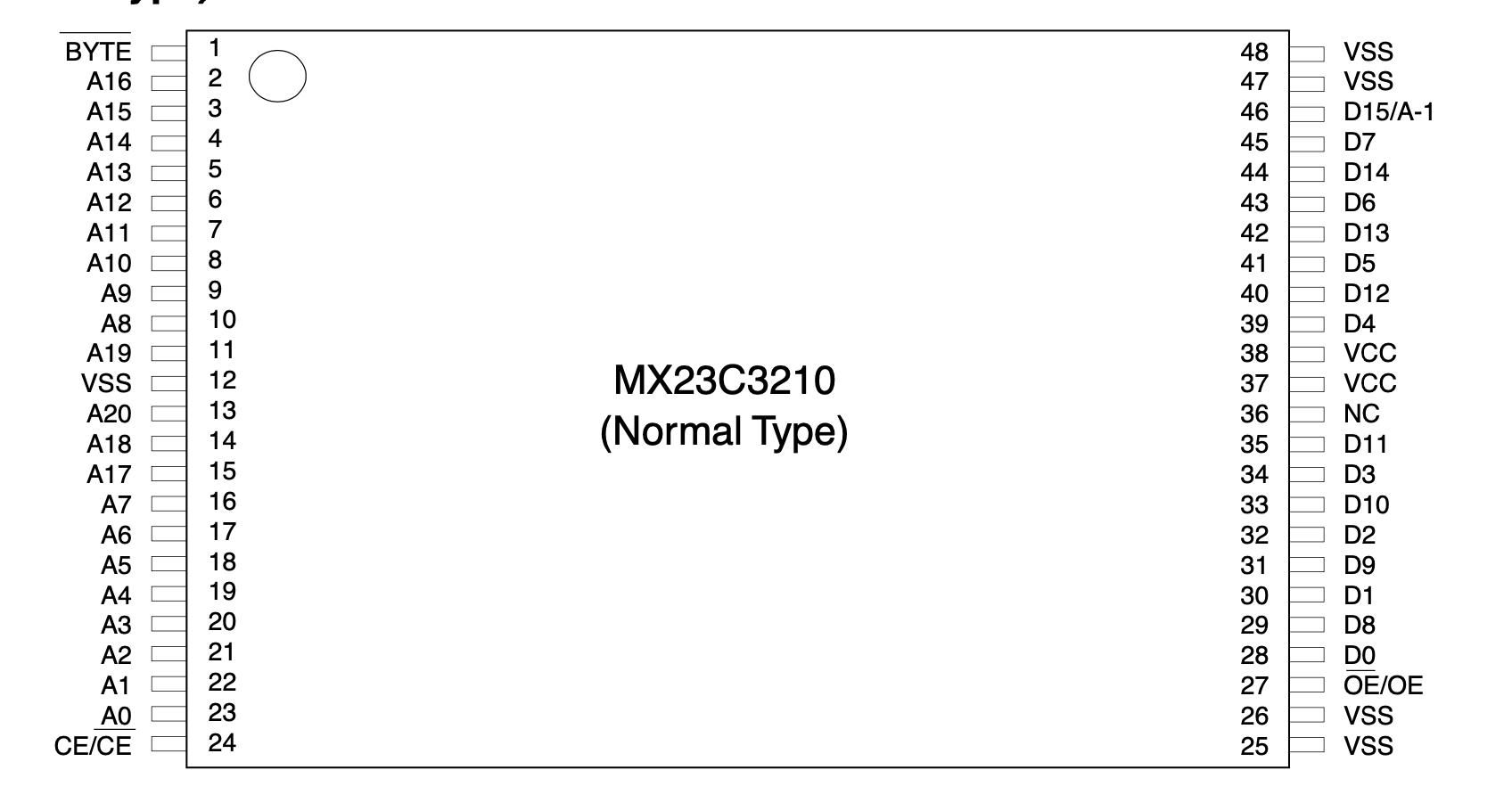.
Reverse Engineering the Janome Memory Cards
Reading the ROM on the Janome MemoryCraft 9000 memory cards
Reading the ROM on the Janome MemoryCraft 9000 memory cards
To make the experience fit your profile, pick a username and tell us what interests you.
We found and based on your interests.
.
I ended up desoldering the ROM from the memory card and putting on 0.1" headers. After a healthy bit of debugging with an oscilloscope I read out the contents and for the first time, it looks promising!
This is what should be on the memory card:
Looking at the binary read out again, I notice a couple of issues:
So sew files only give deltas of movements, not absolute values so if my starting point or one byte is off, it messes up the whole image. With this, I decided to just plot the deltas, expecting on my card there to be a lot of back-and-forth movements.
First I tested on the known good file (downloaded from the internet):
Flywired the memory card to 0.1" headers then jumpered them to an Arduino Mega.
Here's the start of it:
I'm using pyembroidery to parse the results. Looking online, everywhere said these should be *.sew files and thankfully pyembroidery has a parser so I can see how it works.
To test to make sure it works, Janome has some free design you can download and here's "Fairy and Ladybug": https://www.janome.com/inspire/Embroidery/fairy-and-ladybug/
And I get this on my readout:
More points but not right. I'm expecting something like this (Memory 101 column):
hmm ...



Create an account to leave a comment. Already have an account? Log In.
I'll try to record it as soon as I can. I have also opened the scan n sew unit, I'll upload specs once I've finished buzzing it out
I regularly transfer sew files over rs232 from my win98 pc to a Scan n' Sew PC unit. I have both versions of the official janome rewritable memory cards. The first model has volatile memory (coin cell) and is not compatible with the scan n sew pc, only the first scan n sew model.
Would it be beneficial for me to try and record the data sent over the rs232 connection? I don't want to open either of the memory cards I have a they are rare where I live and I don't want to risk breaking them.
Could you upload the raw data from the card? I would like to look at.
I've owned a Janome 9000 since I bought it new in 1998. It's a fabulous machine. I do have the reader/writer box, plus the scanner card that goes into it. It works with Customizer 2000 software on my windows 10 computer and I have a link to free download of that (below) plus written info that I'd be happy to share. I would LOVE to see any and all improvements you have or can make to the embroidery functions of this machine. There's a market for selling anything you develop since it's regularly bought and sold on EBay and other online venues. If, by chance, you can tell me how to make any of the readily available cards erasable, readable, writable, that would be fantastic .
Also, the largest area this machine can embroider is around 4" x 6". If that can be expanded somehow, you'd be regarded as a god.
PS. I only understand a small fraction of the work you've done but I thought I'd throw my 2 cents worth in here.
https://web.archive.org/web/20180717081814/http://www.janome.co.jp/e/e_downloads/c2k150.html
Hi, it is me again. Just some findings that I stumbled upon about the memory card
Apparently, there is an offered solution by Janome to transfer design from PC to empty card for Janome MC9000, MC5000 and MC5700.
You have to purchase the Janome Customizer 2000 software together with its reader/writer box and a blank memory card.
You can read it more about it here https://colab.research.google.com/drive/14OU45iYH2QD_xczZ33D1NeaiyF5jc8fq
And also, I found a video that explains how to run it in newer PC https://youtu.be/9d90zD4c0PI?si=0358VKYKl85lxJAG
According to the photo snippet, apart from .SEW format, it appears this machine family does read .BMP and .WMF
Hope this shed some light
Hi Esophagoose,
I have recently refurbished a Janome MC8000 and have been exploring the idea of creating an alternative to the Janome cartridge, something like a PCB card for sideloading .SEW embroidery data, akin to a printer PCB card.
I believe the concept is similar to Gameboy Homebrew Cartridges.
I've been conducting research for some time now and came across your project.
By the way, I wanted to inform you that the sewing community in Pakistan has been maintaining a family of early 1990s and pre-2000 Janome embroidery machines.
They have managed to salvage surplus cartridge develop their own embroidery pattern cards as seen in the video
https://youtu.be/x9r-jhBzAhA?si=xY4i7cZtxsusQV6B
The memory cards are read-only. I'd be making a new re-writeable card, graft the connector on to it, and give it a USB port so you can directly connect it to a computer. My next steps are to wire a logic analyzer onto the machine with the card in place and see how it reads the card. If you are able to instrument the scan-n-print to see what it sends, that'd be huge
Can we edit these cards? Have you progressed any further? Is there any blank off the shelf cards that could work? I resorted to the scan n print with blank card but would like to completely replace the hardware with arduino but cant find nothing to compare with.
Great work.
Become a member to follow this project and never miss any updates
@Lindsey - That would be really useful if you could record it!